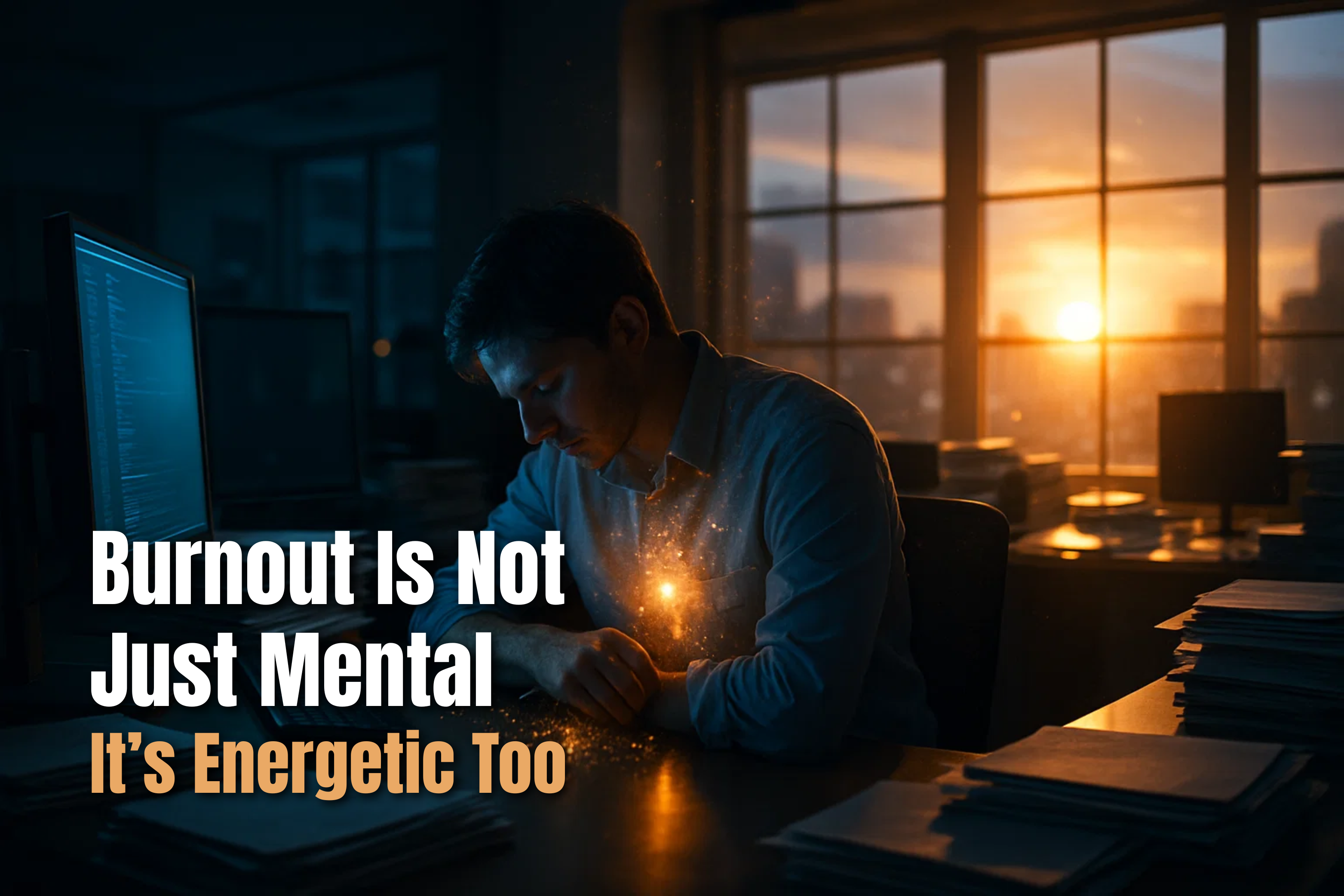Burnout Is Not Just Mental – It’s Energetic Too
Why Burnout Still Persists in Modern Workplaces
The word burnout has become so common that it almost feels like a normal part of corporate life. Employees describe themselves as exhausted, employers notice slipping productivity, and HR departments roll out wellness programs.
Yet despite mental health leaves, gym memberships, and flexible work policies, burnout continues to rise globally.
Why?
Because burnout is not only mental or physical. It is also deeply energetic.
The Hidden Layer of Burnout: Beyond Stress and Deadlines
Most people link burnout to:
Long working hours
Endless deadlines
Poor work-life balance
But these are only surface-level causes. On a deeper level, every human carries an energy field that is constantly influenced by stress, office environments, and interpersonal dynamics.
When this energetic body is depleted:
No amount of sleep feels restful
Coffee doesn’t recharge you
Even enjoyable hobbies start to feel like heavy tasks
This is why traditional burnout recovery solutions often fail—they ignore the energetic dimension of well-being.
Subtle Signs of Energetic Burnout
Energetic burnout often creeps in silently before it becomes visible. Watch for these warning signs:
Feeling heavy, restless, or drained in certain office spaces
Recurring conflicts or irritability with colleagues
A sense of being “checked out” even while physically present
Frequent headaches, anxiety, or stomach issues with no medical explanation
These are not just mental health symptoms—they are energetic red flags.
Why Conventional Productivity Hacks Don’t Work
Organizations often respond with:
Productivity apps
Team-building sessions
Brainstorming workshops
But if an employee’s energy reserves are empty, these quick fixes only touch the surface. It’s like pouring water into a leaking bucket.
Until we address energetic well-being, burnout will keep resurfacing.
Practical Ways to Recharge Your Energy
Recovering from burnout requires tending to both the body and the energy field. Employees and leaders can integrate small, powerful shifts into their routines:
Mindful Micro-Breaks → Just 3–5 minutes of deep, conscious breathing restores more energy than scrolling on a phone.
Grounding Practices → Walking barefoot on grass or simply standing near trees helps neutralize workplace stress.
Energy Hygiene → Cleanse your inner energy as you do your desk—through meditation, journaling, or quiet reflection.
Meeting Intentions → Begin meetings with a 1-minute pause or gratitude check to shift collective energy.
These practices may sound simple, but they directly address the energetic depletion behind burnout.
Why Employers Should Invest in Energetic Well-Being
When leaders recognize the energetic side of burnout, workplaces transform.
A culture that values energy balance experiences:
Higher creativity and focus
Reduced absenteeism and attrition
Stronger teamwork and collaboration
Ultimately, organizations that care for energy as well as efficiency create workplaces where people thrive, not just survive.
Final Thought: Redefining Burnout Recovery
Burnout is not a sign of weakness or poor resilience. It is often a signal that your energy reserves are running dangerously low.
By addressing this hidden dimension, both employees and employers can build healthier, more sustainable, and more human workplaces.
Because true productivity is not just about the hours you work—it’s about the energy you bring into those hours.



Comments
This is really, really important & well-spoken. These haters in the responses don’t get it, but I hope that reading your piece may have nudged them in the right direction.
This is really, really important & well-spoken. These haters in the responses don’t get it, but I hope that reading your piece may have nudged them in the right direction.